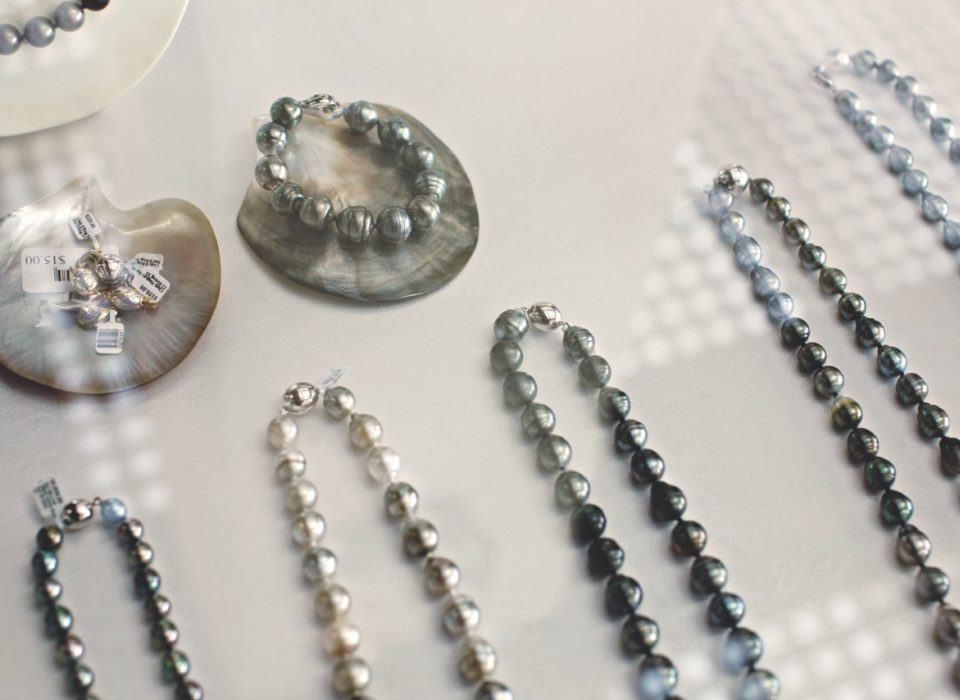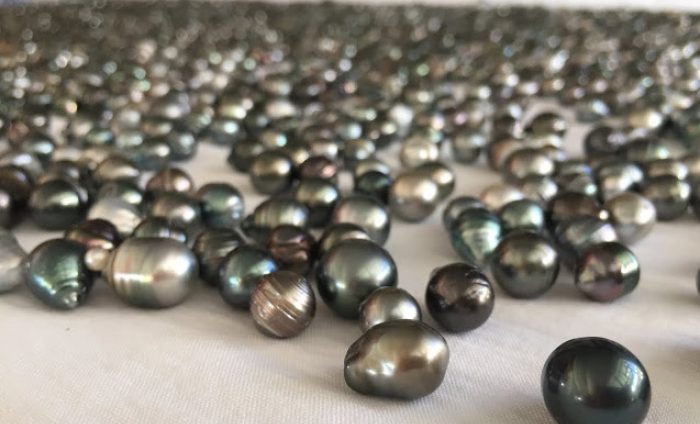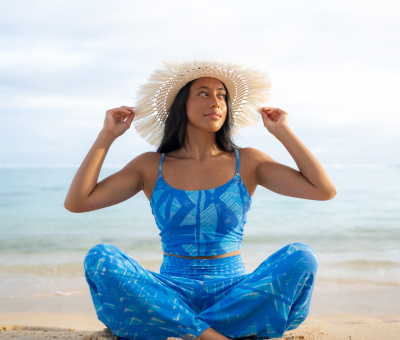Why are black pearls so called?
Because they grow in the black lipped oyster (pinctada margaritifera). When the oyster shell is ground and polished you can see the spectrum of colours. So the pearls are not black as such but range in colour from aubergine, to champagne to peacock green.
What is special about Cook Islands black pearls and where do they come from?
Most Cook Islands black pearls are produced in the pristine lagoon of the northern atoll of Manihiki. The depth of the lagoon, the water temperature, the current, provide ideal conditions for growing black pearls. As mentioned above they are unique because of their amazing variety of colours.
How do black pearls compare with other types of pearls and how valuable are they?
They are second only to the Australian golden pearls ‘South Seas’ pearls .
What is a ‘cultured' black pearl?
We help the process along by implanting a nucleus (like a round bead ) into the gonad or water sack of the oyster. The oysters natural instinct is to expel it, but if it doesn't the oyster is trying to accept this foreign object so it creates a solution called nacre to coat or layer over the nucleus, to try to accommodate this irritant.
What are the basic guidelines for buyers of black pearls, in regard to colour, size, shape, surface quality, lustre etc?
We value each pearl on its size, shape and quality. The quality of a pearl is determined by its lustre and how clean the surface of the pearl is. So we look for any imperfections on the pearl and the sheen or lustre of the pearl and grade it accordingly. To judge the lustre of a round or symmetrical pearl, the sharper the definition of your reflection the better the lustre
This contribution is courtesy of Lesley Okotai, Farm Direct Pearls, Harbour House, opposite Avatiu Harbor. For more information call +682 20 635 or email lesleypearls@gmail.com








